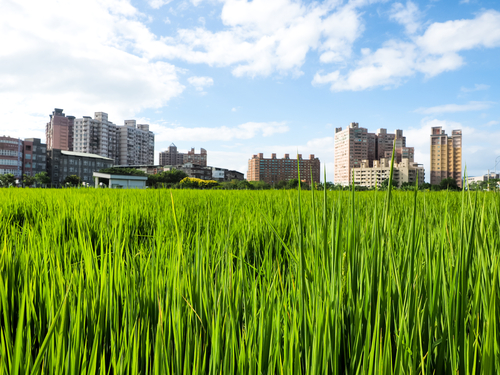China Takes Steps to Separate City and Farmland

Please note that we are not authorised to provide any investment advice. The content on this page is for information purposes only.
China recently announced strict controls to stop big cities expanding on to neighbouring farmland. The Minister for Land and Resources Jiang Daming justified these controls by claiming that good farmland has been ‘eaten by steel and cement’. To safeguard food security, land on the outskirts of cities will be ‘permanent basic farmland’ that can be used only for cultivation.
China recently announced strict controls to stop big cities expanding on to neighbouring farmland. The Minister for Land and Resources Jiang Daming justified these controls by claiming that good farmland has been ‘eaten by steel and cement’. To safeguard food security, land on the outskirts of cities will be ‘permanent basic farmland’ that can be used only for cultivation.
These controls are to apply first to big cities like Beijing, Shanghai and Guangzhou. Attempts to restrict the growth of big cities are long-standing features of China’s urban policy.
Yet these restrictions likely will do more harm than good.
Housing prices in China’s biggest cities are extremely high relative to incomes, and restricting land supply will drive them even higher. For example, the price per square metre of apartments in Beijing is more than four times that of Chongqing, and the price-to-income ratio is over twice as high. It is variation in land prices, rather than construction costs that accounts for these differences in house prices.
High house prices, and other distortions due to a restricted land supply, may choke off the expected benefits from allowing big cities to expand. China has more to gain from concentrating economic activity than is the case for developed countries. A legacy of China’s history of central planning and migration controls is that it has too many small cities.
It is also unclear whether China has a shortage of farmland.
China is increasingly open to importing land-intensive products, as shown by its recent free trade agreements with food exporters like Australia and New Zealand. Even ignoring trade, studies based on satellite remote sensing show that China’s cultivated land area in fact increased (by 2 percent) in the two decades prior to 2000. These same methods also show that urban area expands by cent for every 10 percent increase in city GDP. This ratio is much less than it is elsewhere, indicating the dense nature of China’s cities.
Policy discussions that suggest urbanisation in China relies excessively on land conversion ignore much of this evidence, which is causing inefficient urban sprawl.
My recent paper, co-authored with Chao Li and Geua Boe-Gibson, estimates rates of area expansion for an almost national sample of 225 urban agglomerations in China from 1993 to 2012.
There are three ways to measure city area in China. The first is to use administrative data on the built-up urban districts (shiqu) of prefectural cities reported in City Statistical Yearbooks. Such estimates may be too low since local level governments may undertake land conversions to help finance their budget but not report this to higher levels of government who may be setting limits on land conversion.
The other two methods use satellite-detected nighttime lights, with different thresholds of brightness (in percentiles of the maximum light detected) to distinguish urban from non-urban areas. Compared to other remote sensing data, nighttime lights tend to make cities look too large, especially if a low brightness threshold is used, but the relative error is small for large cities.
Over the two decades from 1993 to 2012, the average annual rate of expansion in land area of these agglomerations was 8 percent according to night-lights, implying a doubling time of nine years. In contrast, expansion rates appear to be just 5 percent (15 year doubling time) if data from City Yearbooks is used. The gap in expansion rates between the administrative data and the remote sensing estimates is even larger once factoring in city GDP and registered population.
A clear pattern emerges of a slowdown in the rate of expansion of these agglomerations. The second decade from 2003–2012 has annual expansion rates that are from 6–8 percentage points lower than the first decade. If one factors in local GDP and population, the annual expansion rates are even lower — by between 6–10 percentage points. Even the built-up area estimates from the City Yearbook data show a significant slowing in expansion rates.
When accounting for city GDP and the registered population, it seems that — as previous have found — a 10 percent rise in city GDP is associated with a 3 percent increase in city area, and local population growth has no significant effect. There is no evidence to suggest there is a shift over time in the driving forces of urban expansion that causes an inefficient sprawl beyond what drives economic growth.
The increasing land area of the agglomerations reflects China’s urban population’s demand for living space, along with the land needed for commercial and industrial development. Since the rate of urban area expansion appears to be already slowing down, artificial restrictions that prevent big cities from expanding on to nearby farmland are neither necessary nor desirable.
Why China’s growing cities do not threaten farmland is republished with permission from East Asia Forum




